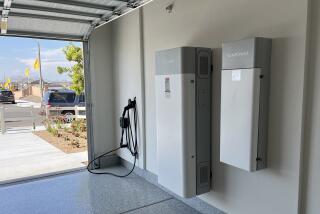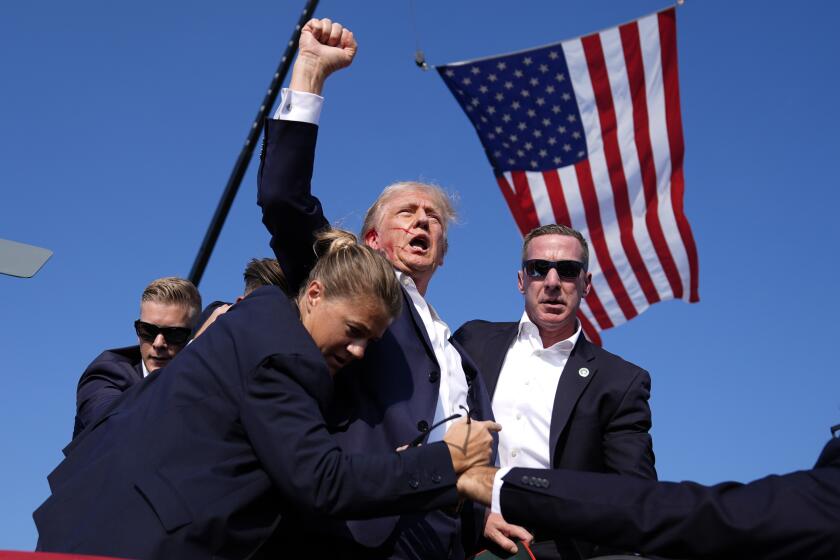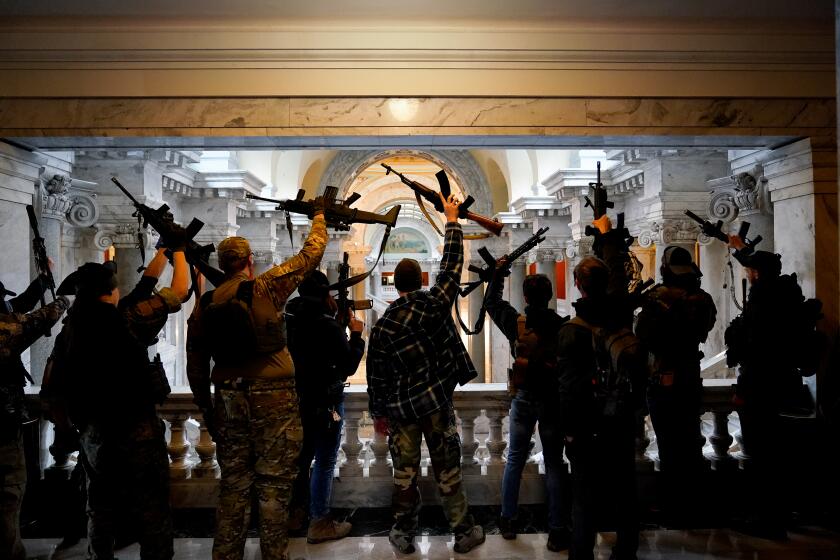Trump rolls back energy requirements for billions of lightbulbs

The Trump administration is rolling back Obama-era rules that expanded energy-use requirements for some of the most commonly used lightbulbs.
But a California energy official said the move would not slow the state’s push to increase energy efficiency standards for lightbulbs overall.
The U.S. Energy Department made public a final rule Wednesday that withdrew a requirement that lightbulbs commonly used in recessed lighting, track lighting, bathroom vanities and decorative fixtures meet the same energy efficiency standards that effectively phased out the traditional incandescent bulb.
The Energy Department, in its rule, said the lightbulb standards had been expanded under President Obama “in a manner that is not consistent with the best reading of the statute,” and that its change “does not prevent consumers from buying the lamps they desire.”
“What’s saved is not worth it, for the little they save,” President Trump told reporters at the White House on Wednesday. He added that the efforts consumers had to go through and the cost also weren’t worth the savings.
The standards, which had been scheduled to take effect in January 2020, applied to roughly half of the 6 billion lightbulbs in use today and would save consumers billions of dollars in energy costs and avoid millions of tons in carbon dioxide emissions, according to environmental groups backing the rules.
“It makes zero sense to eliminate energy-saving lightbulb standards that will save households money on electricity bills and cut climate change emissions by reducing the amount of coal and gas burned in power plants,” said Andrew deLaski, executive director of the Appliance Standards Awareness Project, an advocacy group for improved energy efficiency standards.
DeLaski said the Energy Department also is proposing to roll back higher efficiency standards for common-use, pear-shaped lightbulbs that were set to take effect next year. That proposal has a 60-day comment period that started Thursday.
If that proposal is realized, “no new standard will take effect for any new lightbulb in 2020,” he said.
The California Energy Commission in early 2018 adopted its own higher standard for the common-use bulbs in anticipation of the expanded federal rules.
“It is our understanding that California can keep” that higher standard for those bulbs despite the federal rollback, Noah Horowitz, director of the Center for Energy Efficiency Standards at the Natural Resources Defense Council, said in an email.
DeLaski agreed, but said it’s unclear whether California can expand its higher efficiency standards to include additional types of bulbs, such as those used in recessed lighting and candelabras, because the state had not yet included those in its guidelines.
But J. Andrew McAllister, a commissioner on the California Energy Commission, said his agency plans to adopt the higher standards for a broad range of bulbs this year regardless of the federal rollbacks.
“We’re pedal down; we intend to go with the full array of bulbs,” McAllister said in a telephone interview.
“The folks that are supporting this bad [federal] decision are essentially arguing for individuals’ rights to waste our country’s finite natural resources and pollute our common environment, and California does not agree with that,” McAllister said.
Opponents of the expanded federal standards include the National Electrical Manufacturers Assn., whose members included General Electric Co., Osram Sylvania Inc. and Signify. They said it would risk American jobs and consumer choice.
The move to expand the lightbulb standards was finalized in the waning days of the Obama administration and stems from energy legislation that passed in 2007 and was signed into law by President George W. Bush.
That law, which has led to a dramatic increase in the use of LED bulbs, includes a second requirement that the Energy Department decide whether to develop stricter lightbulb standards for 2020.
The department announced via a proposal made public Wednesday that it has determined those rules don’t need to be changed.
Natter writes for Bloomberg. Peltz is a Times staff writer.
More to Read
Inside the business of entertainment
The Wide Shot brings you news, analysis and insights on everything from streaming wars to production — and what it all means for the future.
You may occasionally receive promotional content from the Los Angeles Times.







